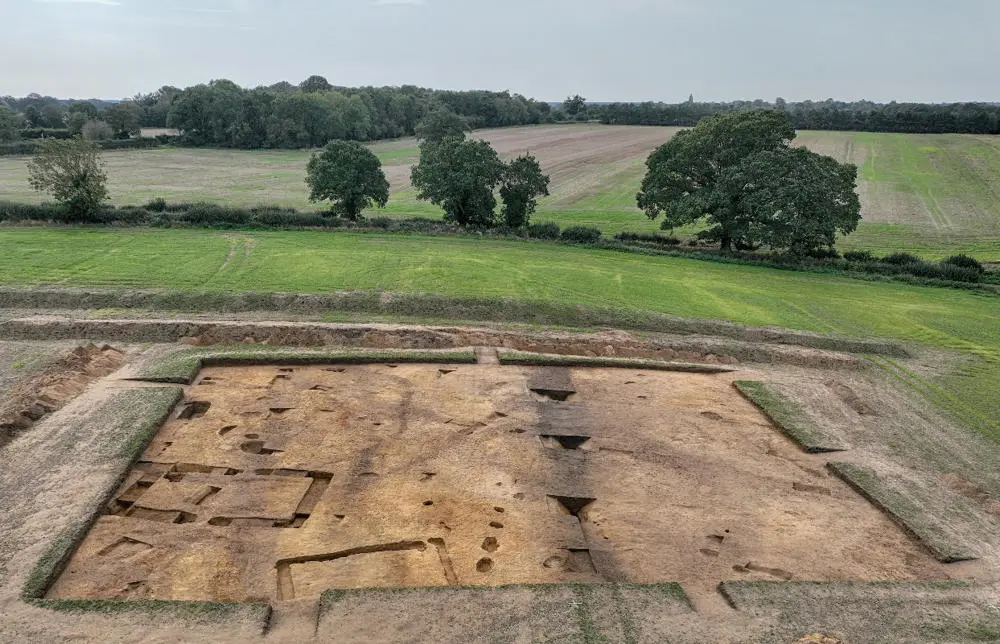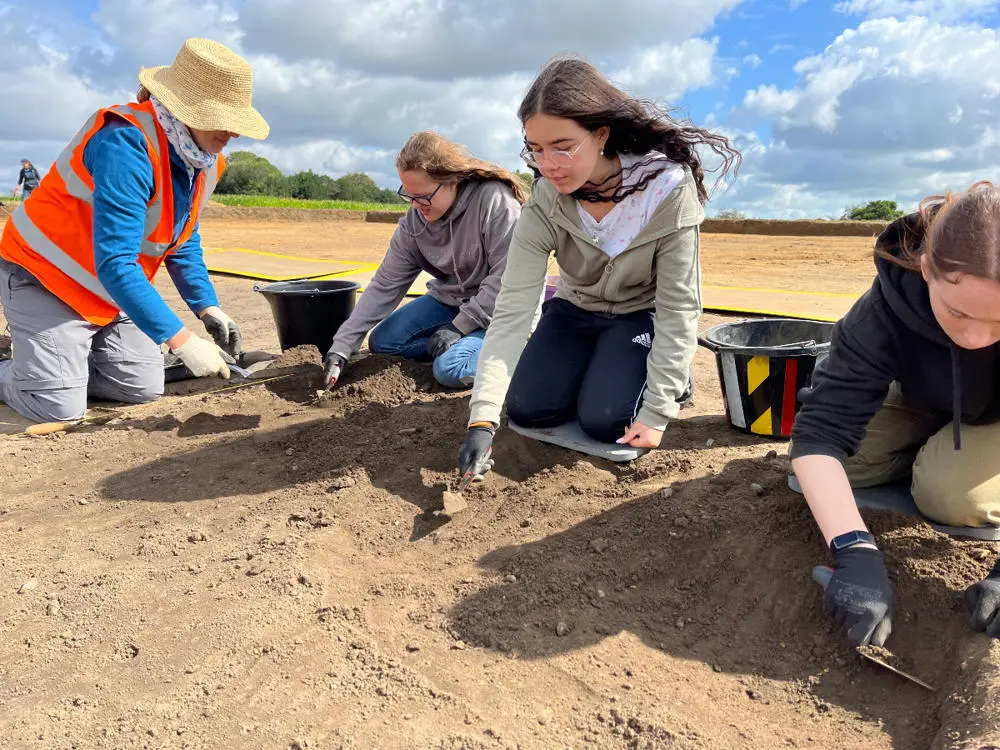The site at Rendlesham is identified as an East Anglian royal centre by The Venerable Bede in his Ecclesiastical History of the English People. Bede records that King Redwald, who died c AD 625 and whose grave is thought to be the Sutton Hoo ship burial, maintained a temple in which there were altars to pre-Christian Gods alongside an altar to Christ – although he does not specifically say this this was at Rendlesham.
This summer’s excavations also revealed:
- The foundations of three new timber buildings (including the probable cult house, or temple)
- Evidence of 7th century metal working, including the discovery of waste products and a fired clay mould to make decorative horse harness
- Two graves of unknown date
- Enclosures and evidence of earlier settlement and activity from the Neolithic (4th millennium BC), Bronze Age, Iron Age and Roman periods
- A Second World War searchlight emplacement
These archaeological discoveries show that Rendlesham has been a favoured location for human settlement and activity for 6,000 years from the fourth millennium BC to the present day, but that it was most important when a royal centre during the 6th to 8th centuries AD.
The most recent archaeology encountered was a Second World War searchlight emplacement, part of a searchlight battery recorded on US Force aerial photography from December 1943.
Councillor Melanie Vigo di Gallidoro, Suffolk County Council’s Deputy Cabinet Member for Protected Landscapes and Archaeology, said:
“This year’s findings round off three seasons of fieldwork which confirm the international significance of Rendlesham’s archaeology and its fundamental importance for our knowledge of early England.
“Everyone involved in the project can take pride that together we have achieved something remarkable. Over 200 volunteers from the local community were involved this year, bringing the total number of volunteers to over 600 for the three-year fieldwork programme, including from the Suffolk Family Carers, Suffolk Mind, and local primary school children from Rendlesham, Eyke and Wickham Market.
“I’d like to thank the landowners and Suffolk County Council Archaeological Service for enabling this project, along with the archaeological contractors Cotswold Archaeology. And of course to all National Lottery players who made possible the grant of £517,300 from The National Lottery Heritage Fund.”
Excavations are now complete and the trenches at the site backfilled, with work already underway to analyse the finds with provisional results in 2024.
To find out more about the Rendlesham Revealed project visit: heritage.suffolk.gov.uk/rendlesham


